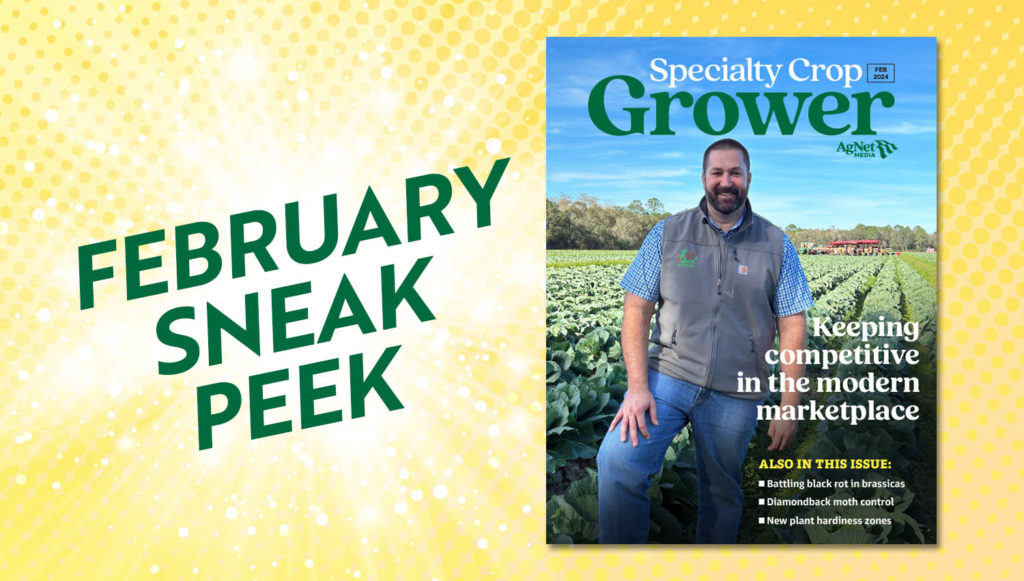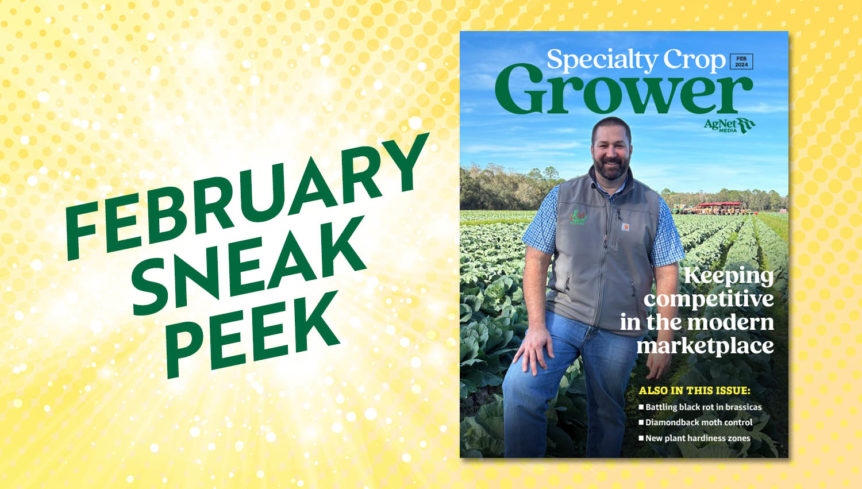
The February issue of Specialty Crop Grower Magazine focuses on L&M Farms as its cover story. The story focuses on Adam Lytch, who manages the company’s farming operations, and how it has stayed competitive in the modern marketplace. Lytch said consumer preference is more important than ever, and L&M must stay up-to-date with demand in the information age.
Black rot disease remains a major hurdle for brassica producers. Tony Keinath, Clemson University vegetable pathologist, said effective chemical options are non-existent, so cultural practices must be utilized. These include crop rotation and starting with clean seed. The bacteria can survive in crop debris from one crop to the next. Infected seed is the biggest culprit of the disease’s spread.
Resistance management is vital to control of diamondback moth, the biggest pest problem for brassica growers. Growers should scout their fields regularly and only apply treatments when damage equals or exceeds one hole per plant. Hugh Smith, associate professor of entomology and nematology with the University of Florida Institute of Food and Agricultural Sciences, talked about the insect’s impact in Florida.
The next generation of ag leaders spoke about key issues during the Florida Ag Expo last November in Tampa, Florida. Producers like Dustin Grooms with Fancy Farms in Plant City, Florida, and Jason Chandler with Grimmway Farms in Lake Park, Georgia, talked about the impact of trade and labor on their farming operations.
Also, the new U.S. Department of Agriculture Plant Hardiness Zone Map shows a warming trend, which has allowed crops like citrus to flourish in North Florida, Georgia and Alabama. Pam Knox, University of Georgia Extension agricultural climatologist, focused on the map’s implications for growers in the Southeast.










